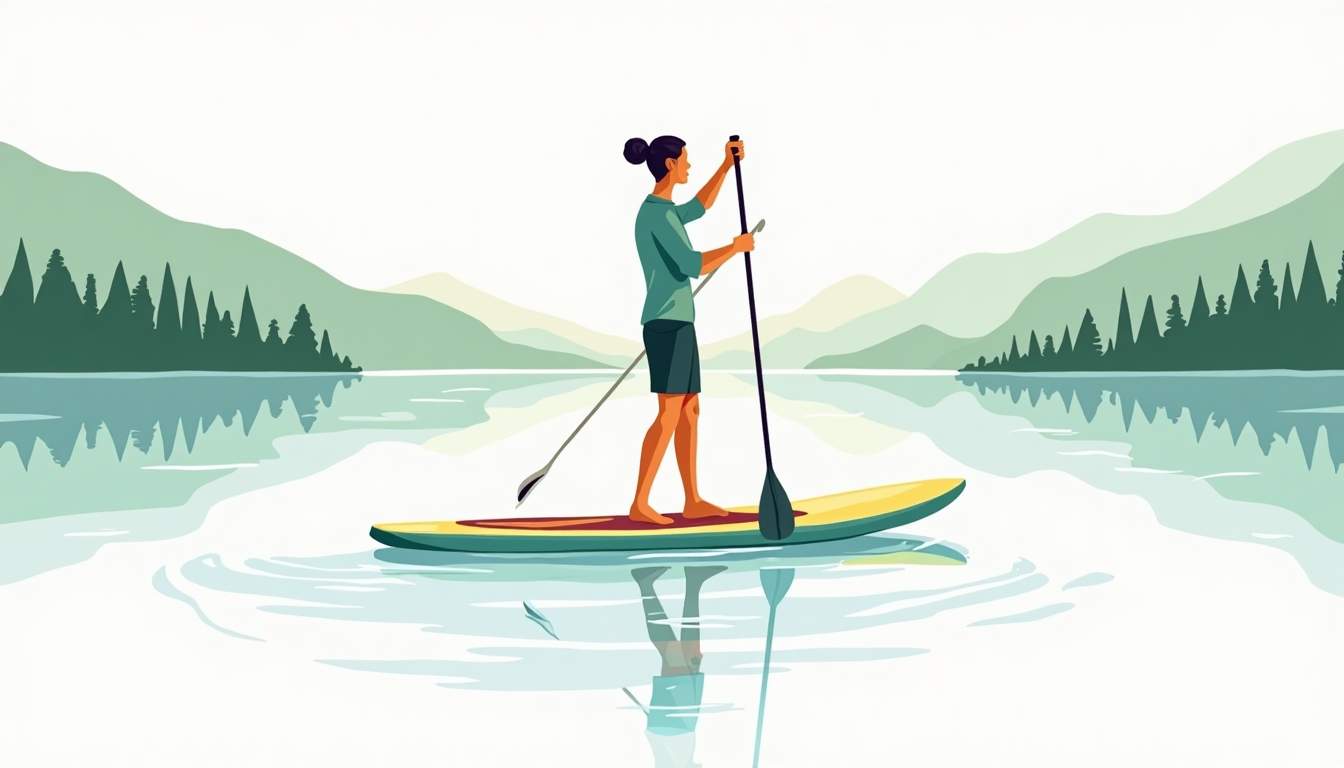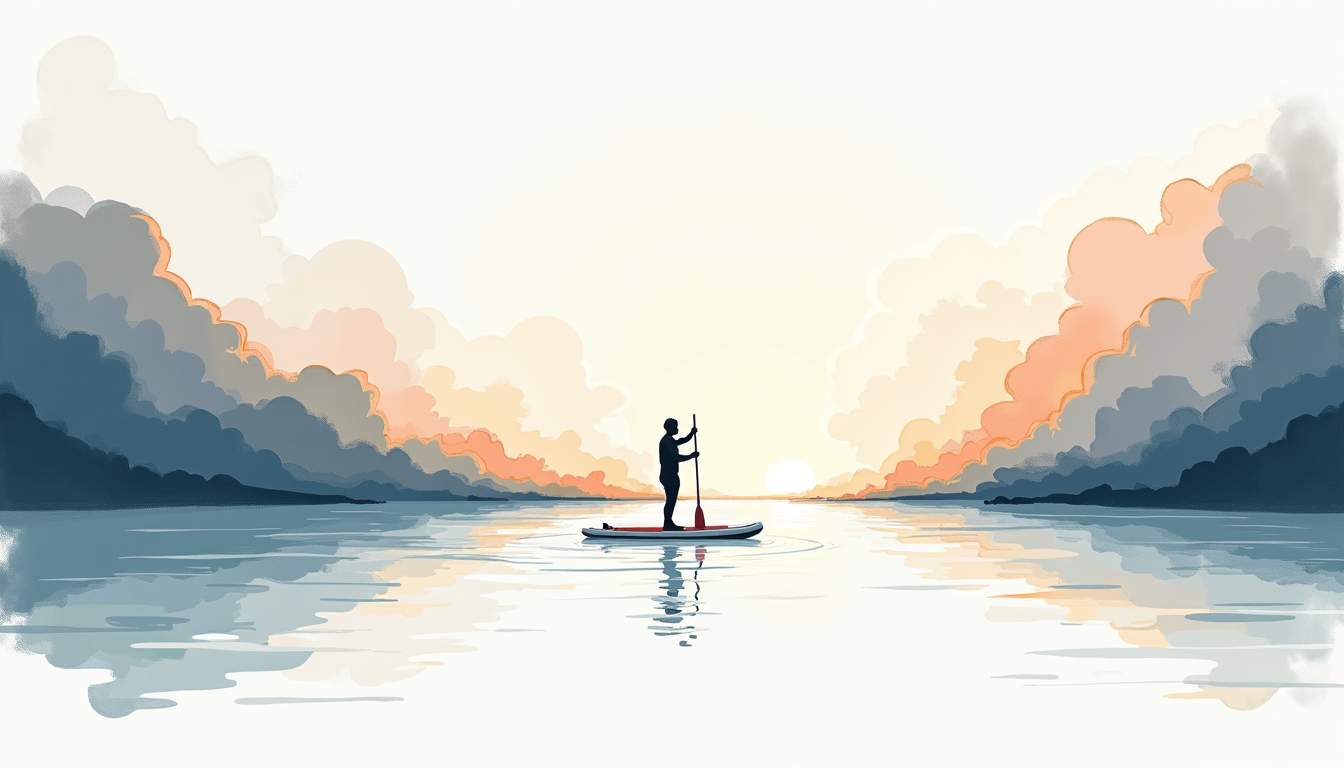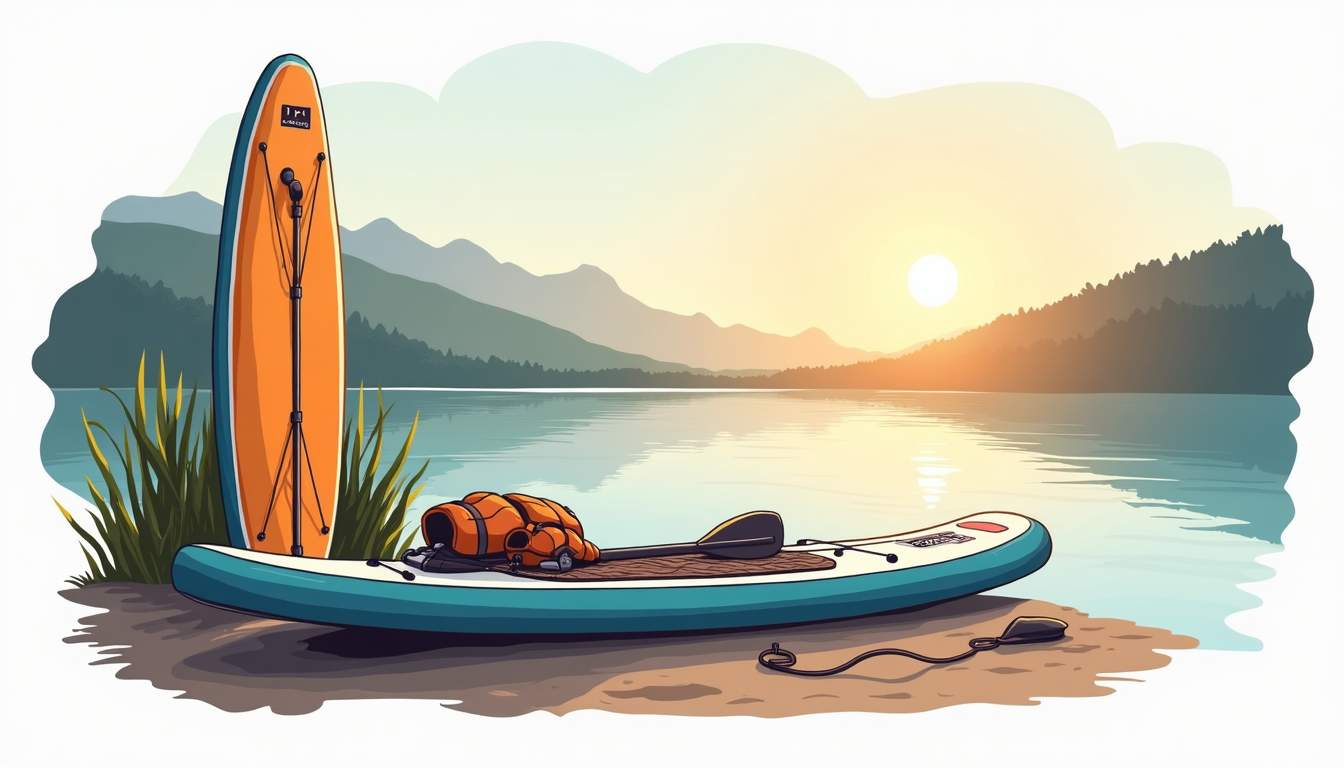
There is a particular stillness that arrives when a vessel finally settles into its stride — a moment where breath, body, and boat align. Whether the activity is paddling, sailing, surfing, or stand-up paddleboarding, balance on the water is not just a physical skill; it is an interplay of attention, technique, and environmental awareness. The following sections explore how to develop stability, the common pitfalls people encounter, and practical drills and mindsets that help make balance feel less like guessing and more like a reliable ability.
Balance is often thought of as a matter of strength or core conditioning, but it is a more complex coordination of sensory information, motor control, and anticipation. The body integrates signals from the inner ear (vestibular system), eyes (visual cues), and proprioceptors in joints and muscles to maintain equilibrium. On water, these signals are constantly changing because the supporting surface is moving in three dimensions, and the brain must fuse imperfect and sometimes contradictory data to produce smooth responses.
Equally important is the motor strategy used to respond to instability. Rather than relying solely on large, reactive movements, skilled paddlers and sailors learn to use small, anticipatory adjustments: a micro-shift of weight, a subtle foot reposition, a slight change in paddle angle. These incremental corrections reduce the need for dramatic recoveries that can destabilize the craft even further.
Core strength provides a foundation for balance, but static core holds are insufficient on their own. Dynamic balance — the ability to control the body while it is moving or being moved — depends on the integration of strength, timing, and coordination. Exercises that mimic real-world perturbations, such as single-leg stance on a wobble surface or controlled rotations while standing, transfer better to on-water scenarios than isolated crunches or planks alone.
One of the best ways to stay upright is to predict what the water will do next. Observing wind patterns, wave sets, and wakes from other boats allows a paddler or sailor to prepare early and avoid being surprised. Anticipation short-circuits reactive balance adjustments, enabling smaller, more precise movements that preserve equilibrium. Developing this perceptual skill requires time on the water and a habit of continuous scanning rather than fixating on a single point.
When conditions are choppy, the craft will rotate and translate unpredictably. Visual focus should shift to a horizon line when possible, using it as a stable reference against which body sway can be measured. For close-range adjustments, watching the immediate water surface and noting the direction of incoming swells helps time weight shifts and stroke placement more effectively.
Landmarks, shoreline features, and the horizon serve as steady anchors for the eyes. For activities like sailing, fixed points can also aid in trim and course decisions, indirectly affecting balance. On paddleboards or kayaks, looking at the water near the bow provides immediate feedback on pitch and roll; glancing forward to the horizon improves yaw and overall stability. The interplay between near and far visual references cultivates an internal model of how the boat is moving relative to the surroundings.
Posture on the water is a dynamic compromise between maintaining a low center of gravity and remaining mobile enough to react. A slightly flexed knee and hip position lowers the center of mass and provides shock absorption without locking into a rigid stance. The head, often overlooked, plays a surprising role: where the head goes, the body tends to follow. Keeping the head aligned and NOT craned too far forward helps maintain balance.

Center of gravity shifts with every movement of the limbs and cargo. A paddle stroke should be executed so that the power is driven from the torso rather than reaching with the arms, which can create large momentary imbalances. Equipment choices also influence the center of gravity: narrower boards are more tippy but faster, while wider ones provide instant confidence at the cost of agility. Matching gear to both skill level and intended activity is essential.
Even tiny adjustments in foot placement can markedly change stability. On a stand-up paddleboard, feet should be roughly hip-width apart and parallel, with the dominant foot slightly ahead during longer strokes. In kayaks, centering weight along the keel and avoiding leaning to one side unless countering wind or wave force prevents gradual drift towards instability. Regularly practicing deliberate shifts of weight from one foot to the other builds the proprioception needed to do this instinctively when conditions demand it.
Progress in balance comes faster when practice is deliberate. Repeated drills that isolate particular responses allow the nervous system to learn efficient patterns. Simple exercises such as picking an object from the deck while standing or kneeling, shifting weight in controlled arcs, and performing balance checks with eyes closed can be scaled to different craft and conditions.
In surf or shore break situations, practicing falling safely and remounting quickly can build confidence and reduce the fear that sabotages balance. For paddlers, stroke efficiency matters: clean entries and exits of the blade reduce unnecessary rocking. Teaching the hands and torso to act like shock absorbers rather than anchors minimizes abrupt shifts in momentum that destabilize the whole system.
Start balancing in calm, predictable water and gradually introduce variables: light chop, wind, wakes, and finally surf. Layering skills allows the body to adapt sequentially rather than being overwhelmed. Combine balance work with paddling technique, navigation, and safety drills so that stability becomes part of a broader competence instead of an isolated trick.
Psychological factors have a powerful influence on balance. Anxiety tightens muscles and narrows attention, making the body less adaptable. Learning to breathe steadily and maintain a relaxed, alert state improves the quality of motor responses. Training scenarios that include gentle surprises — a sudden bobble or an off-angle gust — teach composure and the ability to respond without overcorrection.

Risk management also plays into balance decisions. Choosing conditions that match capability, wearing appropriate personal flotation, and knowing exit strategies reduce the consequences of a fall. Confidence grows not from recklessness but from repeated, safe exposure to progressively harder situations.
Fear is natural, and it can be addressed without dismissing it. Practice controlled falls in shallow, safe water to demystify the experience. Learning how to fall correctly — aiming to relax the body, protect the head, and let go of gear if necessary — reduces the perceived threat and frees the mind to focus on balance techniques rather than catastrophe avoidance.
Equipment setup can be decisive. Board volume, kayak beam, sail trim, and paddle length all influence how stable a craft feels. Adjustable foot braces, grippy deck pads, and earthing the body with rubber-soled footwear can make a noticeable difference. For beginners, choosing a wider board or a more stable kayak model increases time on the water and accelerates skill acquisition.

Maintenance matters as well: a dinged hull or uneven load distribution will introduce unpredictable behavior. Regular gear checks and sensible packing (low and centered) minimize surprises and keep the center of gravity where it belongs.
Clothing choices affect mobility, buoyancy, and temperature regulation, all of which relate to balance. Breathable layers that do not restrict hip and shoulder movement allow for full range of motion. Proper footwear offers grip without compromising the ability to feel subtle shifts underfoot. In colder conditions, thermal protection keeps muscles functioning efficiently, reducing the chance of stiffening and loss of coordination.
A structured routine helps transform scattered experience into reliable skill. Begin sessions with a mobility warm-up on land, followed by basic balance drills in calm water. Progress into technical work — stroke refinement for paddlers, trimming and sail adjustments for sailors — and then introduce a controlled challenge such as following a wake or navigating choppy patches. End with cool-down paddling and a reflection on what went well and what needs attention next time.
Consistency beats intensity. Short, focused practices several times a week build neural adaptations without the fatigue that undermines learning. Recording small metrics — time spent in choppy conditions, number of remounts practiced, or a simple self-rating of stability — creates a sense of progress that motivates further practice.
Learning with others accelerates improvement. Peers provide feedback and create scenarios that challenge comfor zones in a controlled way. Coaching offers objective analysis and targeted drills that correct subtle inefficiencies. Even informal paddling groups contribute by modeling techniques and providing encouragement when conditions are testing.
Balance on the water is not an endpoint but an evolving set of skills. The waters will always introduce new variables: shifting winds, changing tides, and the unique interplay of body and craft on any given day. Embracing the process—building sensory acuity, practicing efficient movement patterns, and developing a calm, adaptive mindset—turns instability into opportunity. The reward is not only staying upright more often but also discovering a deeper connection to the environment and the simple joy of moving well on water.
With patience, deliberate practice, and an eye for incremental improvement, stability becomes less about avoiding failure and more about learning to respond gracefully when the water insists on reminding how dynamic the world can be.
Just as finding balance on the water enhances your connection to nature, living at Tennessee National immerses you in a harmonious lifestyle surrounded by stunning landscapes and premier amenities. From waterfront dining to a private marina and a Greg Norman Signature Golf Course, every day offers an opportunity to embrace calm and active living. Ready to experience this balance for yourself? Schedule a Private Tour and start making memories daily at Tennessee National.